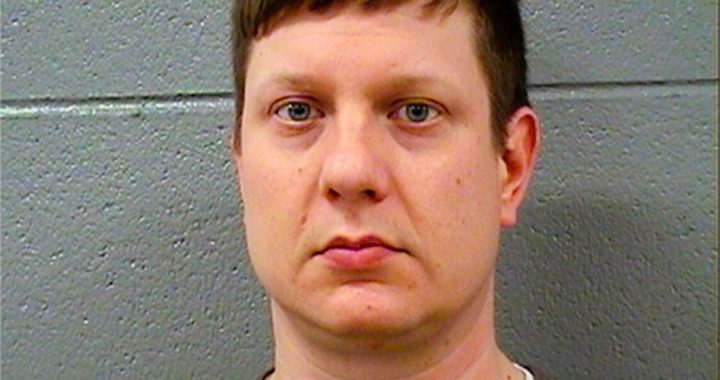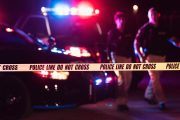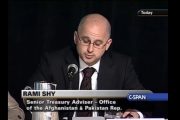
Exactly 400 days after Chicago police officer Jason Van Dyke (shown) shot 17-year-old Laquan McDonald 16 times, killing him, Chicago police released a video of the shooting. On the same day, Tuesday, Cook County prosecutor Anita Alvarez also charged the police officer with first degree murder. The shooting of the black teen by a white officer has fanned the flames of racial tension which were already present in the Windy City. What effect the video and arrest will have on those tensions remains to be seen.
As The New American has reported many times in the past, most police officers are professional men and women of integrity facing a tough job and doing it well. This does not appear to be one of those cases. From the beginning of this ordeal, Chicago police have lied about the events of the night Laquan McDonald died.
For instance, Slate reported on the discrepancies between police statements and the results of the autopsy:
Here is what police at the scene told reporters: At around 9:45 p.m., a squad car responded to a call that someone was trying to break into cars in an industrial area on the southwest side of Chicago. The officers found a boy, Laquan McDonald, standing in the street with a knife. They observed him stabbing the tires of a vehicle. When they ordered him to drop the knife, he ignored them and walked away, down the street.
Pat Camden, a longtime Chicago Police Department press spokesman who now performs that function for the police union, later described McDonald as having had “a strange gaze about him … he’s got a 100-yard stare … he’s staring blankly.”
The responding officers didn’t have a Taser. Waiting for one to arrive, they followed McDonald in their vehicle. A second squad car arrived. McDonald again refused to drop the knife. The police tried to use the two vehicles to box him in against a construction fence on Pulaski Road. He punctured a tire and damaged the front windshield of one of the police cars. Officers got out of their vehicles. McDonald lunged at them with the knife. One of the officers shot him in the chest. At 10:42 p.m., he was pronounced dead at a nearby hospital.
The report by Slate goes on to say that the autopsy — which was only released after a Freedom of Information Act (FOIA) request — tells a very different story. Now, the dashcam video — released as the result of a court order — also tells a different story. (Warning: The video shows graphic violence.)
The shooting happened just two and a half months after the events in Ferguson, Missouri, which sparked riots around the nation and led to increased interest in the Black Lives Matter campaign. The two shootings share some similarities. In both cases:
• A white police officer shot a black teen several times, causing his death.
• The community, led by civil rights activists, reacted with demonstrations.
• Community leaders claimed the shootings were racially motivated.
However, the differences which set these two events apart from one another are more pronounced:
• In Ferguson, the police officer was in imminent danger and acted with appropriate deadly force to stop an attacker; in Chicago, there was no imminent danger. The situation was contained and deadly force was not needed.
• In Ferguson, the officer involved fired only as many shots as were necessary to stop his attacker and did so only after his attacker refused orders to stop; in Chicago, the officer involved emptied his weapon within 30 seconds of arriving on the scene. He fired sixteen shots — the last 14 of those after the teen was down in the road and could not reasonably be considered a threat to anyone.
• In Ferguson, the officer’s statements matched the forensic evidence and the testimony of credible witnesses; in Chicago, the officer’s statements were in direct contradiction to the forensic evidence and the testimony of witnesses — even that testimony given by other officers on the scene.
• In Ferguson, the officer had been involved since the beginning of the incident and was therefore able to accurately assess the events he personally witnessed; in Chicago, the officer arrived on the scene, got out of his car, and, without any first-hand knowledge of the series of events, drew his weapon and began firing until his weapon was empty.
The video, from the dashcam of the police SUV which followed the SUV in which Van Dyke was a passenger, shows Van Dyke exit his vehicle and approach McDonald, who was walking away. McDonald, who can be seen running down the center line of the four lane road before Van Dyke’s SUV veered into his path, slowed his pace to a fast, shuffling walk and changed his direction slightly. By the time Van Dyke exited his vehicle, there was more than a full lane between them.
Van Dyke moved toward McDonald who, Van Dyke says, lunged at him. The video clearly shows that is false; McDonald was moving away from the officer and Van Dyke was walking toward McDonald, closing the distance between them. An instant later, Van Dyke fired his first two shots at which point McDonald twisted and fell. He never got up. Officer Van Dyke fired again as the teen was lying on his side in the road. Then he paused for a second or two before firing again and again until his weapon was empty. What cannot be seen from the video, but is known from the statements offered by other officers, is that Van Dyke then began reloading his weapon.
Five seconds after his last shot, the video shows an officer walk over and kick the knife away from the dead or dying young man. In the last minute before the video ends, no one approached McDonald to check on him or render any aid. He was simply left for dead in the middle of the street.
Just before the video was released, Cook County prosecutor Anita Alvarez announced that she was officially charging Officer Van Dyke with first degree murder. As The Guardian reported:
The video’s release came just hours after Cook County state’s attorney Anita Alvarez announced that CPD officer Jason Van Dyke, who fired all 16 shots that struck Laquan, had been charged with first-degree murder. It was also preceded by a press conference from Chicago mayor Rahm Emanuel, who urged people to remain calm in reaction to the video, which he subsequently claimed not to have seen yet.
Alvarez insists that her decision to charge Van Dyke was not “dictated” by the release of the video, but that it did “[move] up the timing.” As a CNN report said:
Alvarez said the deadline moved up the timing of her announcement but did not dictate her decision to charge the officer with first-degree murder. She also defended the time it took her office to investigate by saying the case is complicated.
“Maintaining public safety is my No. 1 job, and I do not want the public to view this video without knowing this very important context that with these charges we are bringing a full measure of justice that this demands,” she said.
One is left to wonder why Mayor Rahm Emanuel had not taken the time to view the video before it was made public, or why it took 400 days for Van Dyke to be charged with murder. What should happen now (in fact, what should have already happened) is for Van Dyke to be tried, and then to be punished to the full extent of the law if found guilty. But considering that Emanuel is the man who famously said, “You never want a serious crisis to go to waste,” one is also left to wonder to what degree he, and his former boss President Obama, will use this crisis, exacerbated by the lies and the passage of 400 days, to further their goals of increasing federal control over local police forces on the way to building a national police state.
Photo of Police Officer Jason Van Dyke: AP Images




